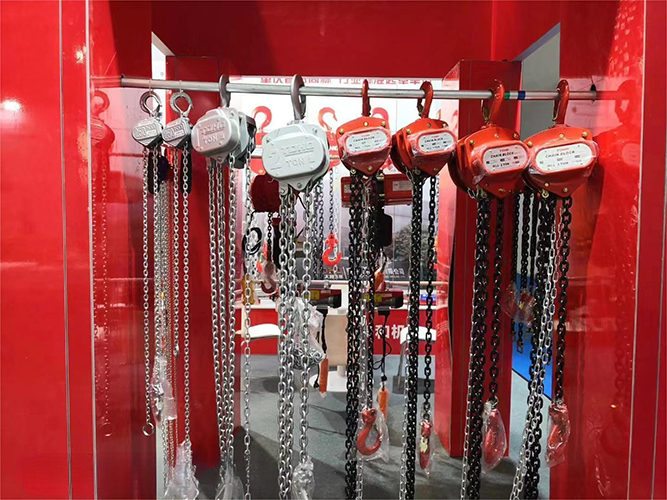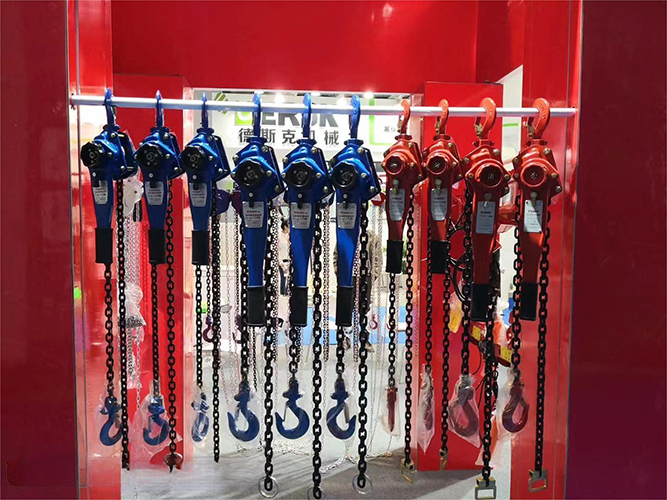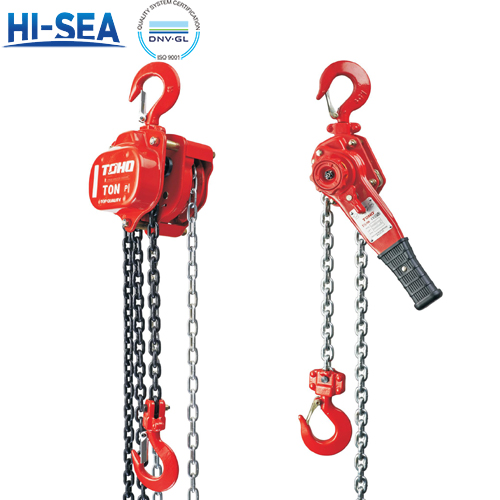
Manual Hoist
Manual hoist is a lifting device which is manually operated. It usually includes two types, manual chain hoist and manual lever block. Chain hoist and lever block are portable lifting devices easily operated by manpower. It is widely used in factories, mines, petro, marine, electricity, farms, construction sites, agriculture and in wharves, docks where no power supply is available. It can be attached to a trolley of any type such as monorail overhead and jib crane.
Overview
Chain block & lever block
Chain block

Safe, reliable in operation with minimum maintenance
High efficiency and small handpull
Fine appearance and durable service
Industrial powder coating meet the requirement of RoHS.
Treated be special anti-corrosion technology
Lever block

Automatic Double Pawl Braking System
Asbestos Free Friction Disc
Reinforced Lever Handle
Industrial Powder Coating meet RoHS requirement
No Preload Required
One Step Operation for free wheel
Casting Chain Stopper, Independent Overload Protection System and Fused
Brake Disc are available with Extra Cost
Rubber handle with screw tighten to avoid slipping
Operation precaution
Visually inspect the hoist for damage or faults prior to use.
Never shock load the chain block.
Never exceed the rated capacity.
Do not use the load chain as a sling.
Do not use more than one hoist to lift or move a load.
Do not use the hoist if the chain is twisted, kinked or damaged.
Do not operate the hoist unless the load is centered between the top and bottom hook.
Never use the hoist if either hook is stretched, deformed, damaged or has a broken or missing safety latch.
Do not use the hoist to lift people or load over people.
Maintenance
Check hooks and hook latches for deformation or cracks.
Twisted hooks or hooks with throat openings more than the reject openings should be replaced.
Check chain for wear and twist.
Proper lubrication with machine oil is necessary to increase the life of the chain. Lubrication should be done based on usage and on a regular basis. It may be necessary on a weekly basis for heavy use or monthly if used less often.
After operation clean the chain block from dirt and keep it in a dry place from rust and corrosion.
Keep clean the friction surfaces of the brake mechanism while lubricating or operating the chain block. Inspect the brake mechanism frequently so as to avoid faulty braking of falling of load.





